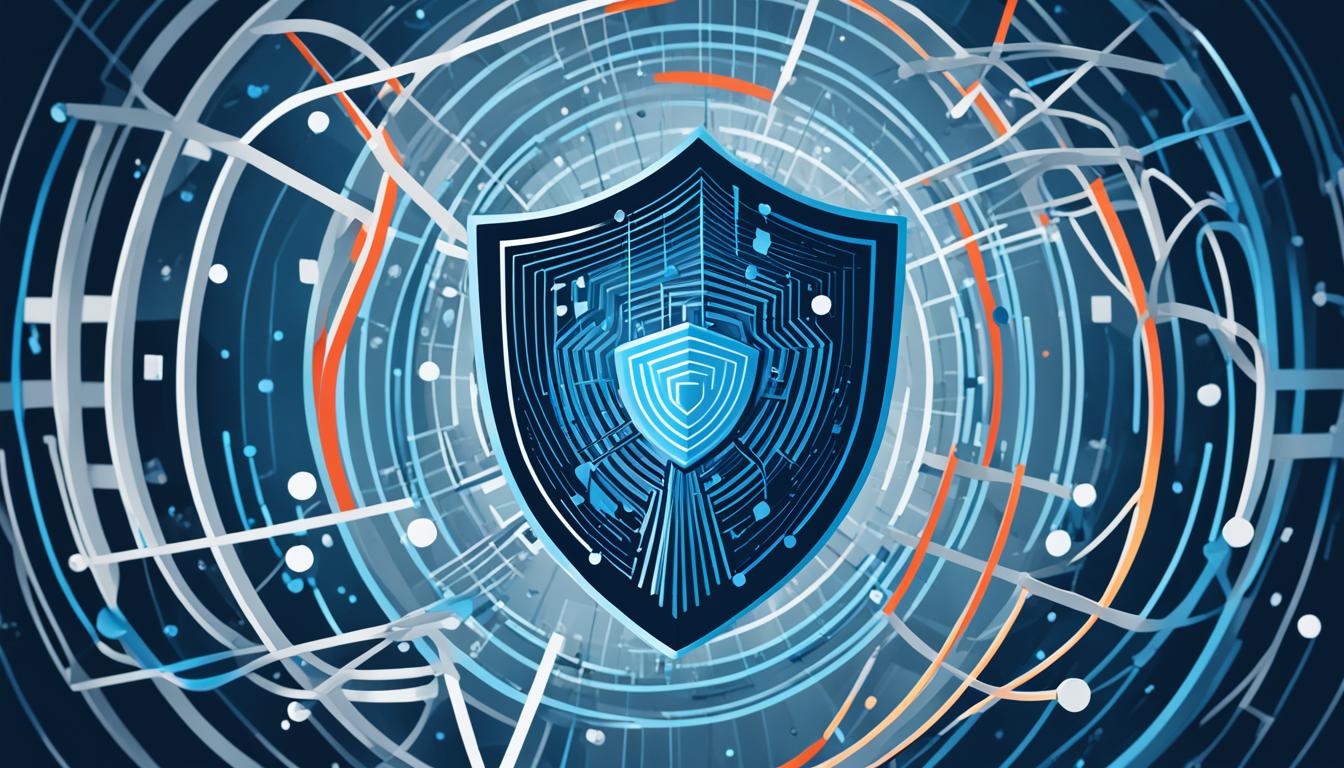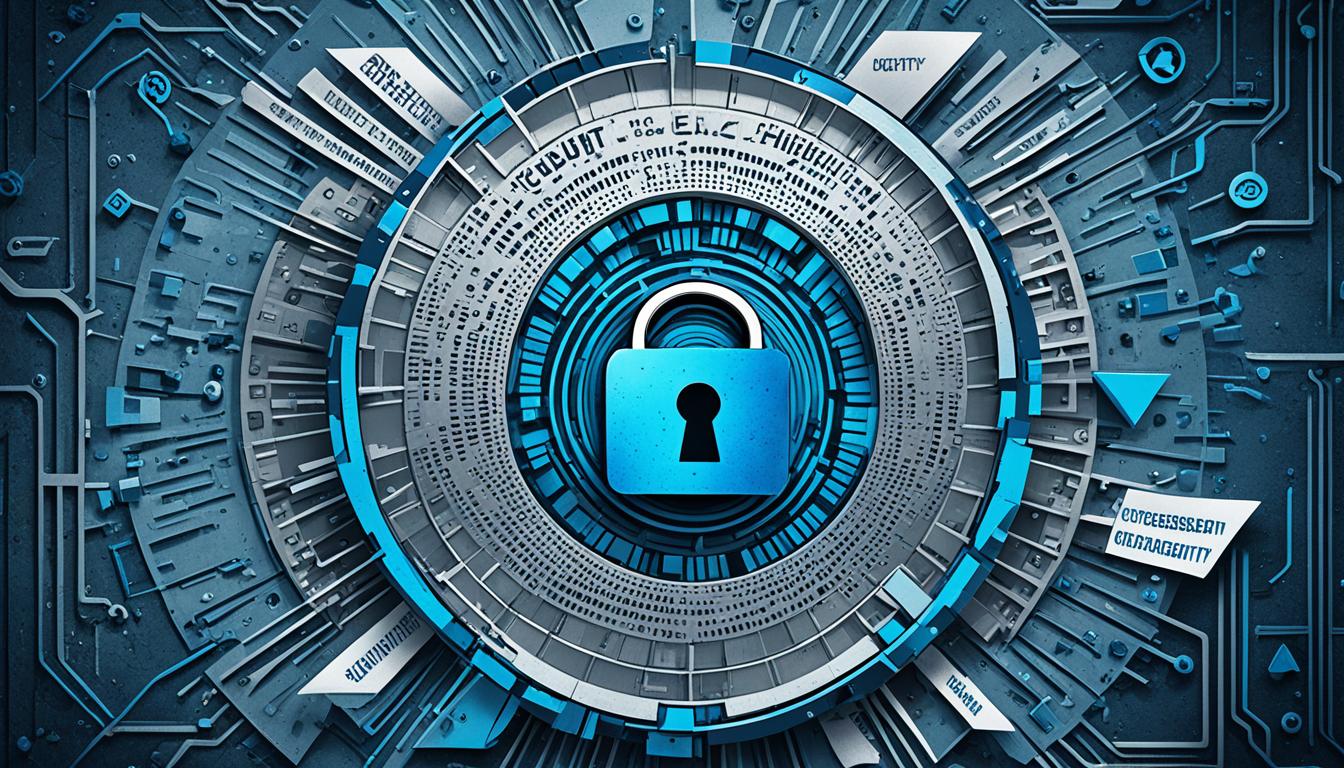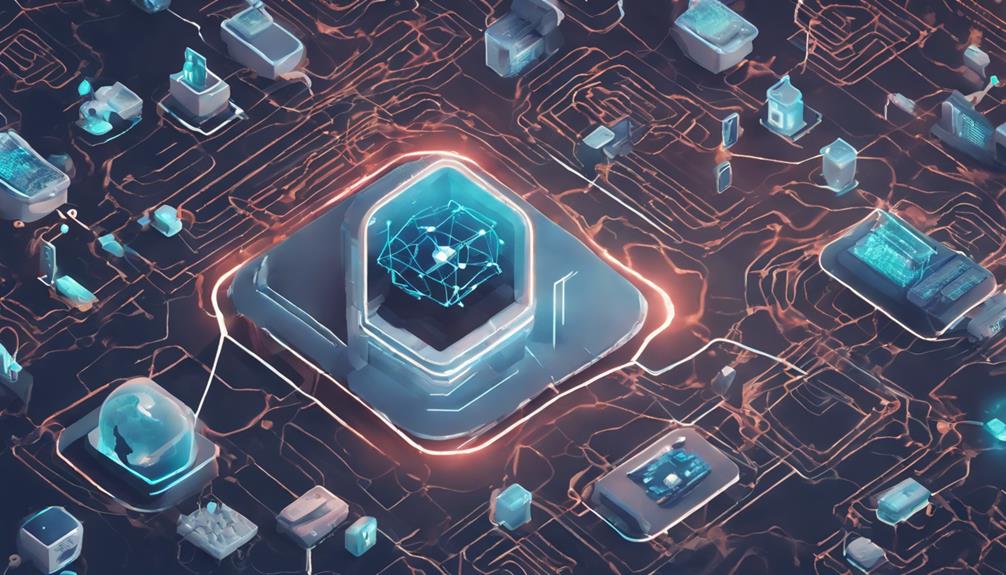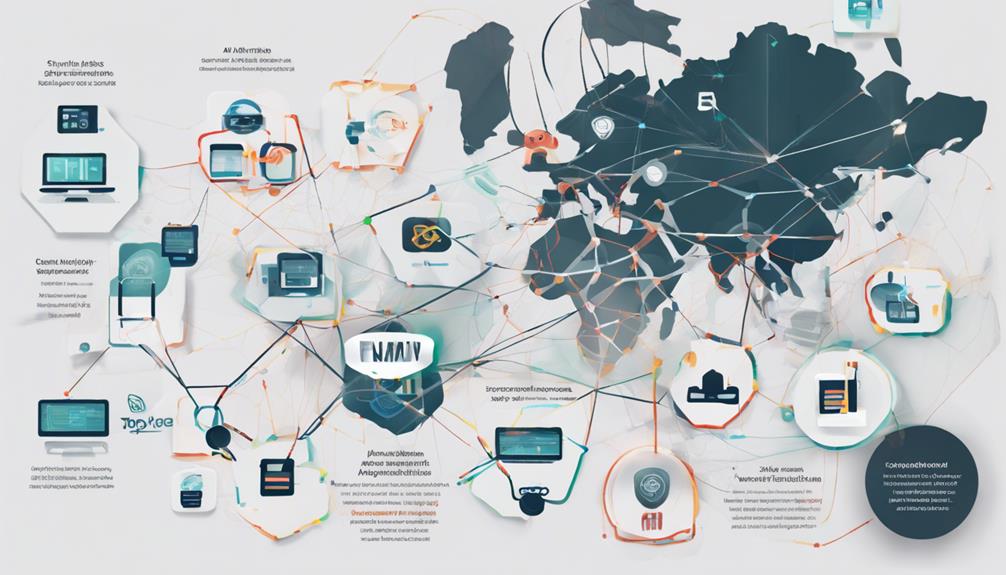In the age of digitalization, cybersecurity remains a paramount concern. The escalating cyber attacks and breaches highlight the need for superior data protection1. Traditional cybersecurity measures are becoming insufficient to combat the evolving threats1. To stay ahead of potential risks, a proactive stance and continuous innovation are required.
Emerging cybersecurity technologies offer promising solutions to address these challenges. One such technology is artificial intelligence (AI) and machine learning (ML), which enable the automation of threat detection and neutralization. Machine learning algorithms are capable of anticipating and neutralizing threats faster than human capabilities1.
Another significant area of focus is quantum cryptography, as quantum computing poses a threat to encryption. Researchers are exploring quantum-resistant cryptography to ensure the security of encrypted data1. Blockchain technology enhances trust in digital transactions by emphasizing data integrity1.
Biometric authentication methods, such as facial recognition and retina scans, are gaining prominence for security purposes. These methods provide an additional layer of security by verifying unique physical characteristics1. Additionally, the adoption of zero-trust architecture has led to a reduction in data breaches for many organizations, as it eliminates the inherent trust traditionally placed in network perimeters1.
The evolving cybersecurity landscape has prompted regulatory bodies to keep up with emerging trends in order to ensure fair practices1. However, as cybersecurity technologies advance, new potential vulnerabilities emerge amidst an ongoing arms race between experts and cybercriminals1. The use of AI and other emerging technologies in cybersecurity also raises ethical dilemmas that need to be addressed1.
The roles of cybersecurity professionals are evolving to become more specialized and nuanced due to the increasing complexity of cyber threats. Skilled cybersecurity professionals play a crucial role in safeguarding sensitive information2. The cybersecurity industry is experiencing rapid growth, with the employment of information security analysts projected to grow by 31% from 2019 to 20292.
To navigate the future of cybersecurity, continuous innovation and vigilance are paramount. It is essential to strike a balance between implementing cybersecurity technologies and respecting individual privacy rights1. By staying informed and embracing emerging technologies, organizations can better protect their digital assets and mitigate the risks posed by cyber threats.
Key Takeaways:
- Emerging cybersecurity technologies are crucial in addressing the escalating cyber threats in the age of digitalization.
- Traditional cybersecurity measures are insufficient in combatting evolving threats, necessitating a proactive stance and continuous innovation.
- AI and machine learning enable faster threat detection and neutralization, enhancing cybersecurity capabilities.
- Quantum-resistant cryptography and blockchain technology ensure secure data protection.
- Biometric authentication methods and zero-trust architecture provide advanced security measures.
The Current State of Cybersecurity
In today’s interconnected world, the current state of cybersecurity is increasingly alarming. Cyber attacks and breaches have become more prevalent, exposing the vulnerabilities of traditional cybersecurity measures. With the ever-evolving threat landscape, it has become crucial to address the limitations of existing security protocols and embrace innovative approaches to ensure robust protection for sensitive data.
Cybersecurity threats take various forms, including phishing attacks, ransomware, social engineering, and IoT attacks. These malicious activities target individuals, organizations, and critical infrastructure, posing significant risks to privacy, financial stability, and national security2.
Traditional cybersecurity measures have proven to be insufficient in combating these sophisticated threats effectively. There is a pressing need for innovation and a proactive approach to bolster cybersecurity risk management2.
The Need for Innovation
Cybersecurity professionals are continuously seeking innovative solutions to stay one step ahead of cybercriminals. By incorporating emerging technologies like Artificial Intelligence (AI) and Machine Learning (ML), cybersecurity experts can enhance threat detection and response capabilities. AI and ML enable faster and more accurate identification of potential threats, minimizing the impact of cyber attacks2.
Behavioral biometrics is another emerging field in cybersecurity that analyzes user behavior patterns to detect potential threats. By scrutinizing factors such as typing speed, mouse movement, and navigation, cybersecurity experts can identify anomalies and prevent unauthorized access to critical systems2.
Zero Trust Architecture has gained popularity as a security model that challenges the traditional assumption of trust within networks. This approach mandates strict identity verification for every person or device seeking access to a network, offering heightened protection against cyberattacks2.
Innovative Solutions for Evolving Risks
Cloud computing has transformed the way businesses operate, but it has also introduced new security risks. To address these challenges, cloud security technologies such as multi-factor authentication, encryption, and access controls have emerged to safeguard data stored in the cloud2.
Quantum computing, still in its early stages, holds immense potential for revolutionizing cybersecurity. With its advanced computational power, quantum computing can enable more secure encryption algorithms, enhancing data protection against malicious attacks2.
Blockchain technology, known for its applications in digital currencies, also plays a crucial role in cybersecurity. By creating a decentralized and tamper-resistant record of transactions, blockchain technology provides secure storage for sensitive data, making it difficult for hackers to gain unauthorized access2.
IoT devices bring convenience and efficiency to various industries, but they also introduce new security vulnerabilities. Robust IoT security technologies, including encryption, access controls, and monitoring, are essential in protecting IoT devices and the vast amounts of data they collect2.
The Path Forward
The current state of cybersecurity necessitates a shift towards innovative and forward-thinking approaches. It is crucial for organizations to acknowledge the limitations of traditional cybersecurity measures and embrace the need for continuous innovation to mitigate risks effectively2. While emerging technologies provide promising solutions, a comprehensive and integrated approach that combines multiple cybersecurity measures and best practices is crucial for creating a resilient security posture.
By adopting a proactive approach to cybersecurity risk management and staying abreast of the latest trends and innovations, organizations can better protect their data, safeguard their assets, and contribute to a more secure digital landscape2.
| Cybersecurity Statistics | Source |
|---|---|
| 68% of businesses experienced cyberattacks in the past year | 3 |
| Ransomware attacks increased by over 200% in the last five years | 3 |
| Small businesses account for 43% of cyberattacks | 3 |
| Nation-state actors are responsible for 25% of all cyber incidents | 3 |
| 20% of all cyberattacks target IoT devices | 3 |
The surge in cyber attacks demands a paradigm shift in cybersecurity approaches. The current state of cybersecurity highlights the limitations of traditional measures and the urgent need for innovation. Incorporating emerging technologies and embracing proactive risk management are crucial in safeguarding data and mitigating evolving cyber threats.
AI and Machine Learning in Cybersecurity
Artificial intelligence (AI) and machine learning (ML) are transforming the field of cybersecurity, revolutionizing threat detection and prevention. With machine learning algorithms at the helm, cybersecurity professionals can anticipate and neutralize threats at an unprecedented pace, surpassing human capabilities. This powerful combination of AI and ML has yielded innovative solutions such as automated threat intelligence and highly efficient phishing detection systems.
The evolution of AI and machine learning in cybersecurity began in the mid to late 1980s, with an initial focus on rule-based systems for anomaly detection4. As technology progressed, supervised learning algorithms were introduced in the late 2000s, significantly enhancing the accuracy of threat detection and prevention4. Subsequently, unsupervised learning algorithms emerged, enabling the identification of anomalous patterns and previously unknown threats4.
In the 2010s, deep learning took center stage, leveraging neural networks to process vast volumes of data and uncover complex patterns, thereby transforming the cybersecurity landscape4. Today, AI and ML techniques leverage data to identify patterns and anomalies in real-time, enabling proactive threat detection and prevention4. This amalgamation of advanced technologies has given rise to multiple approaches in cybersecurity, including supervised learning, unsupervised learning, reinforcement learning, deep learning, and natural language processing (NLP)4.
In supervised machine learning, models are trained with labeled data, continuously improving accuracy over time4. On the other hand, unsupervised machine learning works without labeled data, detecting trends and clusters, albeit with slightly lower accuracy4. Deep learning utilizes neural networks to process data, augmenting threat detection capabilities in cybersecurity4. Reinforcement learning focuses on dynamic decision-making, adapting to maximize rewards or minimize penalties in cybersecurity contexts4. Human supervised machine learning incorporates human feedback to enhance model accuracy and minimize false positives4.
The application of natural language processing (NLP) in cybersecurity involves analyzing language for malicious activity detection, including email content, website text, and social media posts4. Additionally, neural machine translation (NMT) is utilized to enhance malicious activity detection by translating data across languages4. AI and ML are employed in various cybersecurity domains such as web and DNS filtering, vulnerability management, intrusion detection and prevention, and phishing detection, significantly fortifying organizations’ defenses against cyber threats4.
A break down of AI and ML applications in cybersecurity:
| Application | Description |
|---|---|
| Web and DNS Filtering | AI and ML technologies are employed to filter out malicious websites and domain names, ensuring secure browsing experiences. |
| Vulnerability Management | Machine learning algorithms automate the identification and mitigation of system vulnerabilities, enhancing the overall security posture. |
| Intrusion Detection and Prevention | AI and ML in network traffic analysis and anomaly detection contribute to identifying potential intrusions, enhancing overall cyber defense capabilities. |
| Phishing Detection | Efficient phishing detection systems leverage AI and ML to identify and block sophisticated phishing attacks, safeguarding sensitive information. |
By embracing AI and machine learning in cybersecurity, organizations can proactively tackle emerging threats, staying one step ahead of cybercriminals. The integration of these technologies helps improve the efficiency and effectiveness of threat identification and response5. Cybersecurity professionals are empowered with the tools and insights needed to combat evolving threats, ultimately safeguarding critical assets and maintaining a secure environment.
Quantum Cryptography
In the ever-evolving landscape of cybersecurity, encryption plays a crucial role in safeguarding sensitive data from unauthorized access and manipulation. However, the emergence of quantum computing poses a significant challenge to traditional encryption methods2. Quantum computers have the potential to crack current encryption algorithms in a fraction of the time it would take traditional computers6. As organizations grapple with the implications of this new threat, the development of quantum-resistant cryptography has gained momentum to ensure the continued security of encrypted data2.
Quantum-resistant cryptography utilizes mathematical principles that exploit the laws of quantum mechanics to provide robust encryption that is resistant to quantum computer attacks26. By leveraging the principles of quantum mechanics, quantum-resistant encryption algorithms can withstand the computational power of quantum computers, offering enhanced security for sensitive information2. This approach to cryptography upholds the integrity and confidentiality of data, even in the face of advances in quantum computing technology.
Securing Encrypted Data in the Quantum Era
The rise of quantum computing has prompted researchers and industry experts to explore innovative solutions to protect encrypted data. Quantum cryptography, which leverages the principles of quantum mechanics, offers intriguing possibilities for enhancing the security of encrypted information2. Unlike traditional cryptographic methods that rely on complex mathematical algorithms, quantum cryptography uses the fundamental principles of quantum mechanics to create unbreakable cryptographic keys. Due to the inherent properties of quantum mechanics, any attempt to intercept these keys would result in an irreversible disturbance, alerting the communicating parties to the potential security breach.
Quantum Key Distribution (QKD) is a prominent application of quantum cryptography that allows secure data transmission by generating shared secret keys known only to the communicating parties7. These keys are formed using quantum states, ensuring their confidentiality and serving as the foundation for secure communication channels. QKD offers a theoretically proven method to establish secure connections, immune to attacks from quantum computers that can break classical encryption algorithms7.
As the field of quantum cryptography continues to advance, researchers and organizations are actively working towards developing robust encryption protocols that can withstand the power of quantum computers. The race to build quantum-resistant cryptography standards is essential to safeguard encrypted data in the quantum era, ensuring the long-term security of sensitive information67.
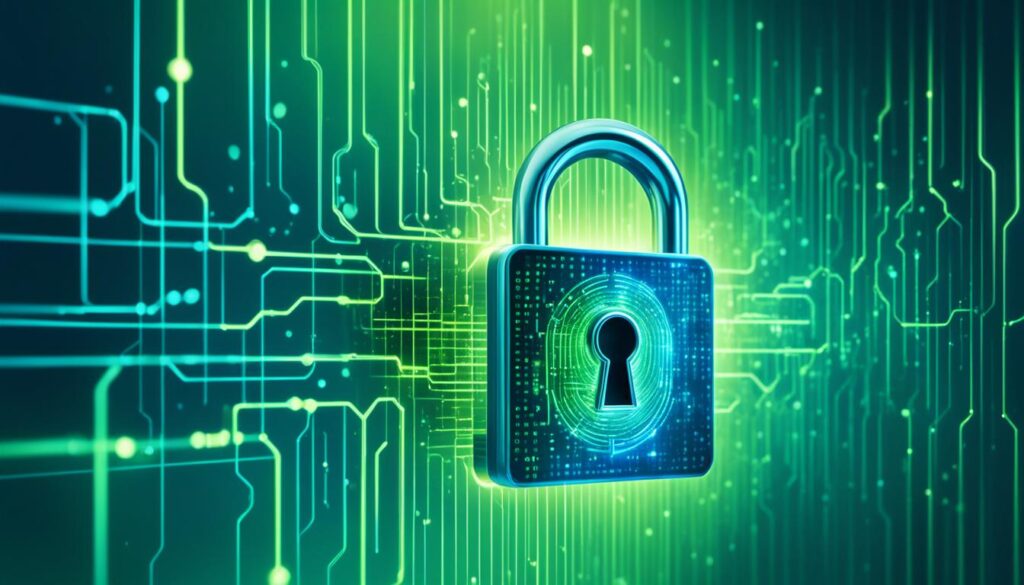
Quantum cryptography, with its promises of enhanced security and encryption capabilities, is a subject of intense research and development. It holds the potential to revolutionize the field of cybersecurity by providing a secure foundation for data protection in the quantum era. As quantum computing continues to advance, the need to adopt and implement quantum-resistant cryptography becomes increasingly critical for organizations and individuals alike. By staying at the forefront of encryption technologies, businesses can ensure the security of their data and maintain the trust of their stakeholders in an ever-evolving cyber landscape.
Blockchain Security
Blockchain technology is revolutionizing the way digital transactions occur, providing enhanced security, trust, and transparency. With its decentralized and immutable nature, blockchain offers a promising solution to the cybersecurity challenges faced by organizations today. By leveraging the power of blockchain, data lineage and governance can be significantly improved, ensuring the integrity and reliability of information.
Data lineage, a critical aspect of blockchain technology, refers to the ability to trace the origin and movement of data throughout a transaction. This feature enhances transparency and accountability, as each data entry is recorded and timestamped, creating an unalterable trail of information. The8 utilization of blockchain technology in data governance enables organizations to establish robust data management practices, ensuring compliance, accuracy, and trust in digital transactions.
Digital transactions conducted on a blockchain are secured through advanced cryptographic algorithms, protecting the privacy and integrity of the data. The use of encryption techniques ensures that data remains confidential and inaccessible to unauthorized parties. Additionally, blockchain technology offers a decentralized architecture, eliminating the reliance on a central authority for transaction verification and validation. This decentralized approach enhances trust and reduces the risk of manipulation or fraud within digital transactions.
Blockchain also plays a crucial role in securing digital identities, a key concern in the digital age. Traditional methods of identity verification often fall short in terms of security and privacy. However, blockchain-based identity management systems provide a more secure and efficient solution. Through the use of cryptographic techniques and decentralized storage, digital identities can be protected from unauthorized access and misuse. The immutability of blockchain ensures that digital identities cannot be tampered with, providing a reliable mechanism for securing personal information.
“Blockchain technology offers the potential to revolutionize cybersecurity by providing decentralized and secure environments for digital transactions and data governance.” – Experts in Blockchain Security
The application of blockchain technology extends beyond data lineage, data governance, and securing digital identities. It can also enhance the security and trustworthiness of supply chains, financial transactions, and even voting systems. With its unique blend of cryptography, decentralization, and transparency, blockchain is poised to reshape the future of cybersecurity.
Zero Trust Architecture
Zero Trust Architecture (ZTA) is a security framework that aims to minimize security breaches by adopting a “never trust, always verify” approach. It recognizes that traditional security models are insufficient in today’s digital landscape, where cyber threats are inevitable and constantly evolving. Implementing ZTA can provide organizations with enhanced data management and reduced security breaches.
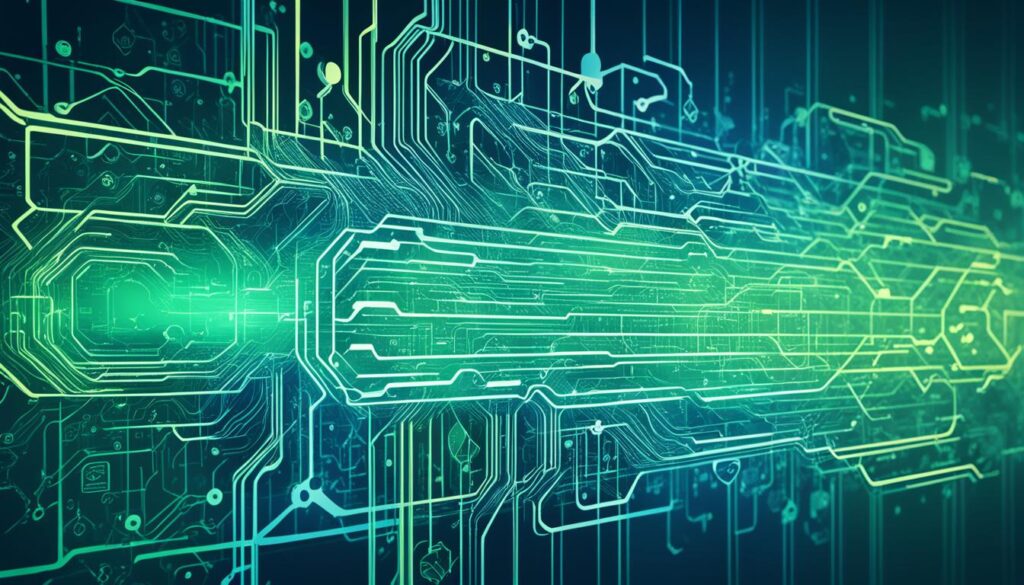
ZTA improves security by implementing tight controls such as encryption, authentication, and health checks to protect sensitive data and applications9. By eliminating default trust to any user or device within the network perimeter, ZTA helps mitigate insider threats9. It also reduces the chances of a breach by implementing granular access policies down to the resource level to restrict lateral movement910. In case of a breach, ZTA enables a quicker and more effective response in detecting, responding to, and recovering from successful breaches9.
Furthermore, ZTA provides detailed monitoring and logging of users’ and entities’ activities for deeper visibility into potential risks9. This enables organizations to have real-time risk assessment through detailed authentication logs, device and resource health checks, and user and entity behavior analytics9. By embracing ZTA, organizations can reduce network complexity and cost by minimizing the number of security devices serving similar functions10.
Transitioning to a Zero Trust Architecture requires a culture shift and integration into the organization’s data protection strategy10. Many enterprises of all sizes and industries have recognized the importance of implementing ZTA to address the insufficiency of traditional security models10. It has become crucial in today’s digital landscape due to the inevitability of security breaches10.
Benefits of Zero Trust Architecture:
- Enhanced data management and security9
- Mitigation of insider threats9
- Reduced chances of a breach910
- Quicker and more effective response to breaches9
- Detailed monitoring and logging for better risk visibility9
- Real-time risk assessment through authentication logs and analytics9
- Reduces network complexity and cost10
Cloud Security
With the exponential growth of cloud computing, organizations are reaping the benefits of improved efficiency and cost-effectiveness. However, the shift to the cloud has also introduced new security risks that need to be addressed1.
Cloud security is an essential component of a comprehensive cybersecurity strategy. It focuses on safeguarding data stored in the cloud, protecting it from unauthorized access and potential breaches. To ensure the security of sensitive information, organizations implement various technologies and practices1.
Data Protection
Data protection is a critical aspect of cloud security. Encryption is used to encrypt data before it is stored in the cloud, ensuring that even if unauthorized access occurs, the data cannot be read or understood without the encryption key. This provides an additional layer of protection1.
Multi-Factor Authentication
Multi-factor authentication (MFA) is another vital security measure. It requires users to provide multiple forms of identification, such as passwords, biometrics, or security tokens, before accessing cloud services. MFA significantly enhances security by adding an extra layer of verification1.
Encryption
Encryption plays a crucial role in preventing unauthorized access to data stored in the cloud. It ensures that even if data is intercepted or compromised, it remains unreadable without the corresponding decryption key1.
Access Controls
Access controls are implemented to regulate and monitor the access and usage of data stored in the cloud. By assigning specific permissions and access levels based on roles and responsibilities, organizations can ensure that only authorized individuals can access sensitive information1.
By employing these cloud security measures, organizations can mitigate the risks associated with cloud computing and protect their valuable data1.

Incorporating cloud security technologies such as data protection, multi-factor authentication, encryption, and access controls is crucial to safeguarding sensitive information stored in the cloud.1
IoT Security
The proliferation of IoT devices has brought about numerous advancements and conveniences in various industries. However, it has also exposed vulnerabilities that can be exploited by cyber attackers, raising concerns about IoT security.
According to recent statistics, insecure default settings, obsolete components, and insecure update mechanisms are among the vulnerabilities that IoT devices can have11. These vulnerabilities leave many organizations vulnerable to heightened cybersecurity risks due to a lack of industry foresight and standardization in IoT security11.
IoT devices are not immune to the threats faced by other digital systems. DDoS attacks and malware, for example, can exploit these vulnerabilities, causing extensive disruption and harm11. In addition, insecure communication channels pose significant risks for IoT devices and networks11.
To address these challenges, ongoing innovations in IoT security are being developed. Implementing strong authentication and encryption methods is crucial for protecting IoT devices and data from unauthorized access and tampering11. Regular updates and patches for IoT devices and software are also essential to minimize vulnerabilities and improve overall security11.
Furthermore, it is crucial to prioritize threat intelligence to stay informed about evolving threats targeting specific IoT devices12. Leveraging AI-powered systems for real-time data analysis can aid in swift anomaly detection and proactive threat response12. However, it is important to note that while AI can enhance cybersecurity, it can also be leveraged by malicious actors for tasks like vulnerability scanning and social engineering12.
Looking ahead, collaboration with security experts, continuous monitoring, and investment in threat intelligence are essential in addressing the emerging challenges in IoT security12. Additionally, organizations must encourage communication among security teams, developers, and business leaders to adopt a holistic approach to cybersecurity and effectively address future cyber threats12.

| IoT Security Vulnerabilities | Impact |
|---|---|
| Insecure default settings | Increases the risk of unauthorized access |
| Obsolete components | Creates vulnerabilities that can be exploited |
| Insecure update mechanisms | Leaves devices susceptible to attacks |
Biometrics in Cybersecurity
Biometric security measures, such as facial recognition, fingerprints, and retina scans, offer significant benefits in terms of security. These technologies utilize unique physical or behavioral traits to verify and authenticate individuals, providing a higher level of protection against unauthorized access. Biometrics help reduce reliance on passwords, decreasing the chance of successful spoofing13.
In online transactions, biometrics play a crucial role by providing stronger non-repudiation evidence, making it difficult for individuals to deny their involvement in a transaction and reducing fraudulent claims13. Moreover, biometric authentication offers several advantages, including uniqueness and the difficulty to forge, making access highly improbable for unauthorized individuals14.
One of the significant advantages of biometrics is the enhanced user experience they provide. With features like facial recognition or voice recognition, biometrics simplify authentication processes and make them remarkably user-friendly13. Additionally, specific industries benefit from biometrics in varying ways. For example, biometrics play a vital role in secure access control and identity verification for online transactions in the financial sector and e-commerce13.
The Equifax data breach incident in 2017 highlighted the vulnerabilities of password-based security systems and emphasized the need for stronger authentication methods like biometric security solutions13. However, it is essential to address concerns regarding data privacy and potential misuse associated with biometric data. Biometric information is highly personal and requires stringent protection measures to prevent unauthorized access and potential data breaches14.
Biometric systems provide continuous real-time authentication by constantly monitoring and tracking unique behavioral patterns, allowing them to detect abnormal changes that may indicate potential security breaches13. Additionally, incorporating multi-factor or multi-modal biometric authentication, which combines various biometric data with traditional authentication factors, creates a layered defense against cyber threats13.
Advantages and Considerations of Biometric Security
| Advantages | Considerations |
|---|---|
| Fingerprint recognition reduces reliance on passwords and offers high accuracy | Biometric data, like any other personal information, is vulnerable to data breaches |
| Facial recognition provides convenient and quick authentication | Concerns regarding data privacy and potential misuse of biometric information |
| Retina scans offer a high level of security and accuracy | Spoofing attacks involve the creation of replicas or imitations of biometric traits |
While biometrics offer valuable security advantages, proactive measures are necessary to address potential threats in biometric security. Implementing techniques like liveness detection, multi-factor authentication, continuous monitoring, and secure storage can enhance the overall security of biometric systems and mitigate potential vulnerabilities14.

The Future Landscape of Cybersecurity
In today’s rapidly evolving digital landscape, the integration of emerging technologies is key to shaping the future of cybersecurity. By harnessing the power of Artificial Intelligence (AI), Machine Learning (ML), Blockchain, and other cutting-edge innovations, organizations can establish a holistic approach to cybersecurity2.
The use of these emerging technologies enables a proactive defense against cyber threats by leveraging advanced algorithms to identify and neutralize potential risks2. From behavioral biometrics to zero trust architecture, these technologies provide organizations with the necessary tools to combat cybercrime effectively2.
However, as technology advances, so do the tactics employed by cybercriminals. The threat landscape is constantly evolving, necessitating ongoing control monitoring and cybersecurity risk management2. Organizations must remain vigilant in their efforts to stay one step ahead of these ever-changing threats, as data breaches, financial losses, reputational damage, and legal liabilities become increasingly prevalent2.
One of the profound implications of this expanding landscape is the diverse range of career opportunities in the cybersecurity industry. Professionals specializing in network security, cloud security, digital forensics, and ethical hacking are in high demand, reflecting the robust and evolving job market within the field2.
Furthermore, ongoing technological advancements in cybersecurity highlight the continuous evolution in the field. Organizations must adopt the latest cybersecurity technologies to effectively protect their sensitive information and prevent cyber threats. The future of cybersecurity lies in a comprehensive approach that integrates emerging technologies and emphasizes proactive defense strategies to ensure a secure digital environment2.
Ethical and Privacy Considerations
As cybersecurity continues to evolve, incorporating new technologies like biometrics and AI, it raises important ethical and privacy concerns that require careful consideration.
” Balancing security with individual privacy is crucial in the digital age.”
Regulatory bodies are working diligently to keep pace with emerging cybersecurity trends and ensure fair practices are implemented.
Data breaches, such as the Equifax cyber attack in 2017, which compromised 14.5 million sensitive data records, have underscored the need for transparency in reporting breaches and maintaining trust in the industry15.
Effective incident response plans that cover various threats and allocate resources appropriately are necessary for cybersecurity professionals. However, there are ethical gray areas to navigate, such as the justifiability of aggressive measures, paying ransoms to attackers, and striking the right balance between user responsibility and organizational security measures16.
Confidentiality is another challenge for cybersecurity professionals. While upholding the secrecy of sensitive information is crucial, implementing stringent security measures to prevent unauthorized access can be complex16.
One of the core ethical challenges faced by cybersecurity professionals is striking a balance between user privacy rights and the need for network monitoring activities. Ensuring privacy while maintaining the safety and security of cyberspace requires careful consideration and ethical decision-making17.
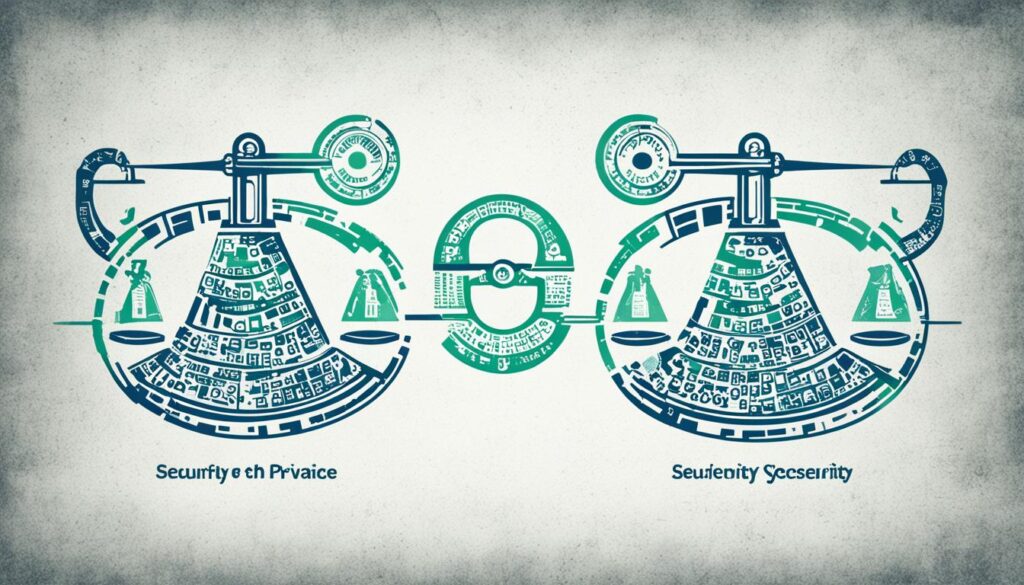
Challenges and Potential Risks
As cybersecurity technologies continue to evolve, they bring with them a host of challenges and potential risks. The ever-growing landscape of cyber threats creates an ongoing arms race between cybersecurity experts and cybercriminals. This dynamic environment demands constant innovation, adaptation, and vigilance to stay one step ahead of potential vulnerabilities and attacks18.
Cybersecurity Challenges
The rapid advancement of technology poses significant challenges for cybersecurity professionals. With each new innovation, there is the potential for new vulnerabilities to exploit. Cybercriminals are quick to adapt their tactics, making it crucial for cybersecurity experts to anticipate and counter these evolving threats18.
- Increased Frequency of Cyberattacks: In 2021, businesses experienced a 50% increase in cyberattacks per week compared to the previous year18.
- Broad Impact: Cybersecurity threats affect not only governments and businesses but also non-profits and individuals across various sectors18.
- Emerging Technologies: The rise of cloud computing, blockchain, and IoT devices introduces new challenges in securing data and networks18.
The Arms Race in Cybersecurity
The constant battle between cybersecurity experts and cybercriminals resembles an arms race, where each side tries to outsmart the other. Cybercriminals exploit vulnerabilities to gain unauthorized access and cause substantial damage, while cybersecurity professionals work tirelessly to develop defensive strategies and safeguards to thwart these attacks19.
- Adaptive Tactics: Cybercriminals are continually evolving their tactics to circumvent security measures, making it essential for cybersecurity experts to stay ahead of emerging threats19.
- Complex Attack Vectors: With the increasing complexity of attacks, cybersecurity professionals must be prepared to defend against multiple attack vectors simultaneously19.
- Resource Disparity: Cybercriminals often have more resources at their disposal, making it challenging for organizations to defend against sophisticated attacks19.
Meeting the Challenges
Addressing cybersecurity challenges and mitigating potential risks require a comprehensive approach that combines technical solutions, regulatory measures, and a proactive mindset within organizations. By adopting advanced technologies and implementing robust security protocols, businesses and individuals can enhance their defenses and minimize the impact of cyber threats18.
“Cybersecurity is an ongoing battle, and the key is to stay one step ahead. By constantly adapting and innovating, we can better protect our digital assets and stay resilient against evolving threats.”

| Statistic | Data |
|---|---|
| Global Cyberattacks Increase in 2022 | 38% compared to 202119 |
| Data Breach Impact in 2022 | 422.1 million people, a 41.5% increase over 202119 |
| Ransomware Attacks Daily | 1.7 million, with an attack happening every 2 seconds19 |
| Cost of WannaCry Ransomware Outbreak | Estimated $100 million for the National Health Service19 |
| Suspicious Activity Related to Ransomware SARs | $590 million in the first half of 2021, exceeding the total reported in 202019 |
| Projected IoT Devices Online by 2025 | More than 27 billion, up from 12 billion in 202219 |
| Phishing Emails Blocked Daily by Google | More than 100 million19 |
| BitMart Exchange Loss to Hackers | $150 million in December 202119 |
| Respondents Concerned about AI-based Attacks | Nearly 68% in a 2021 study19 |
Why Choose Intone?
When it comes to cybersecurity, Intone is a trusted provider of comprehensive solutions that address the evolving threats and challenges faced by organizations. By leveraging cutting-edge technologies and industry best practices, Intone’s cybersecurity solution offers tailored strategies to protect sensitive data, mitigate risks, and ensure compliance with regulatory frameworks.
Intone’s approach to cybersecurity is centered around custom-crafting security controls, enabling organizations to build a robust defense system that aligns with their unique requirements and risk profiles. This tailored approach ensures that organizations have the necessary measures in place to safeguard against the ever-changing threat landscape1.
Real-time monitoring is a critical aspect of Intone’s cybersecurity solution, allowing for timely detection and response to potential threats. Through sophisticated monitoring tools and advanced analytics, Intone enables proactive threat intelligence, enabling organizations to stay one step ahead of cyber attackers20.
Compliance with regulatory standards is a top priority for organizations, and Intone’s cybersecurity solution is designed to facilitate compliance efforts. By integrating a centralized IT compliance platform, organizations can streamline compliance processes, track and manage security controls, and maintain an audit trail of activities. This not only saves time and effort but also helps organizations achieve compliance faster and more efficiently20.
Intone understands that cybersecurity is not a one-time effort, but an ongoing process. To stay resilient in the face of emerging threats, organizations need to constantly evolve their cybersecurity strategies. Intone keeps pace with the latest innovations and emerging technologies, ensuring that their cybersecurity solution remains at the forefront of the industry. This commitment to staying ahead of the curve allows Intone to provide organizations with a holistic approach to risk management21.
By choosing Intone as their cybersecurity partner, organizations benefit from a comprehensive suite of tools, expertise, and support. Intone Gladius software offers a wide range of features, including custom security controls, real-time monitoring, compliance facilitation, and integration with major control frameworks such as SOC, NIST, IASME, COBIT, and more. With a focus on enhancing security while reducing costs, Intone aims to empower organizations to effectively navigate the ever-changing cybersecurity landscape20.
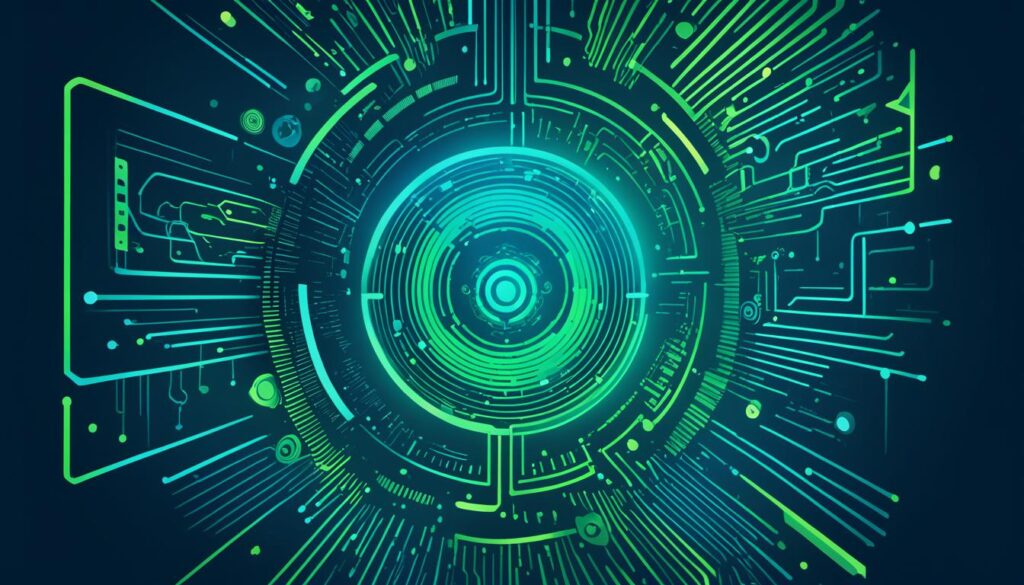
| Key Features of Intone Gladius: |
|---|
| Custom-craft security controls |
| Real-time monitoring |
| Compliance facilitation |
| Centralized IT compliance platform integration |
Conclusion
As businesses and organizations across various sectors continue to embrace computerized systems, cybersecurity protocols have become a top priority in safeguarding against data breaches, ransomware attacks, and hacks3. The evolving sophistication of cyber threats necessitates a proactive approach to cybersecurity to disrupt attackers’ techniques and protect critical services3. In addition to large corporations and government agencies, digital threats now target smaller businesses, healthcare organizations, educational institutions, and individuals3. The involvement of nation-state actors in cyber warfare and espionage further complicates the digital threat landscape, blurring the lines between traditional and cyber warfare3.
Supply chain attacks, such as the SolarWinds hack, demonstrate the rising impact on organizations and their customers, highlighting the need for enhanced cybersecurity measures3. IoT vulnerabilities pose significant risks, with many devices lacking sufficient security measures and being exploited for attacks and breaches3. Attackers are increasingly leveraging AI and machine learning capabilities to automate attacks and identify vulnerabilities in target systems3.
With evolving cybersecurity regulations and standards, organizations face compliance challenges, requiring them to adapt to dynamic digital threat landscapes3. Building effective incident response and resilience strategies is essential for preventing, detecting, mitigating, and recovering from breaches3. Furthermore, global collaboration among governments, law enforcement agencies, and cybersecurity organizations is crucial in sharing threat intelligence and mitigating global cyber threats3.
In the future of advanced cybersecurity, the integration of emerging technologies such as AI, machine learning, and predictive defense, along with hybrid cloud deployments, will play a pivotal role in proactively protecting sensitive information3. Staying up-to-date with these technologies and implementing proactive security strategies, backed by ongoing vigilance and adaptation, are paramount for a robust defense against evolving cyber threats3.
FAQ
What are some emerging cybersecurity technologies that I should know about?
Why are traditional cybersecurity measures no longer sufficient?
How is AI and machine learning being integrated into cybersecurity?
What is quantum cryptography?
How does blockchain technology enhance cybersecurity?
What is zero trust architecture?
What are some security measures for cloud computing?
What are some ongoing innovations in IoT security?
How do biometric security measures enhance cybersecurity?
How do emerging technologies contribute to a holistic approach to cybersecurity?
Are there any ethical and privacy considerations when using emerging technologies in cybersecurity?
What are some challenges and potential risks in the field of cybersecurity?
Why should I choose Intone for cybersecurity solutions?
What is the future of cybersecurity?
Source Links
- https://intone.com/the-future-of-cybersecurity-emerging-technologies/
- https://www.eccu.edu/blog/technology/the-latest-cybersecurity-technologies-and-trends/
- https://www.simplilearn.com/top-cybersecurity-trends-article
- https://zvelo.com/ai-and-machine-learning-in-cybersecurity/
- https://www.eccu.edu/blog/cybersecurity/artificial-intelligence-in-cybersecurity/
- https://www.pwc.com/gx/en/issues/technology/quantum-cryptography.html
- https://brandefense.io/blog/emerging-cybersecurity-technologies-whats-on-the-horizon/
- https://security.cms.gov/posts/top-5-cybersecurity-trends-2024
- https://www.zscaler.com/resources/security-terms-glossary/what-is-zero-trust-architecture
- https://www.informationweek.com/cyber-resilience/zero-trust-architecture-what-you-need-to-know
- https://deviceauthority.com/internet-of-things-and-cybersecurity-emerging-trends-challenges-and-solutions/
- https://www.linkedin.com/pulse/emerging-cybersecurity-technologies-how-protect-your-organization-ojvtf
- https://www.aratek.co/news/the-top-8-benefits-of-biometrics-in-cybersecurity
- https://alicebiometrics.com/en/role-of-biometrics-in-cybersecurity-threats-and-solutions/
- https://www.upguard.com/blog/cybersecurity-ethics
- https://www.ollusa.edu/blog/cybersecurity-ethics.html
- https://www.ncbi.nlm.nih.gov/pmc/articles/PMC9921682/
- https://www.cyberdegrees.org/resources/hot-technologies-cyber-security/
- https://www.thesagenext.com/blog/emerging-cybersecurity-challenges
- https://intone.com/emerging-cybersecurity-threats-2023-and-how-to-defend-against-them/
- https://intone.com/category/top-current-cybersecurity-technology-trends-to-watch-intone-timeline/the-future-of-cyber-security-emerging-technologies/
